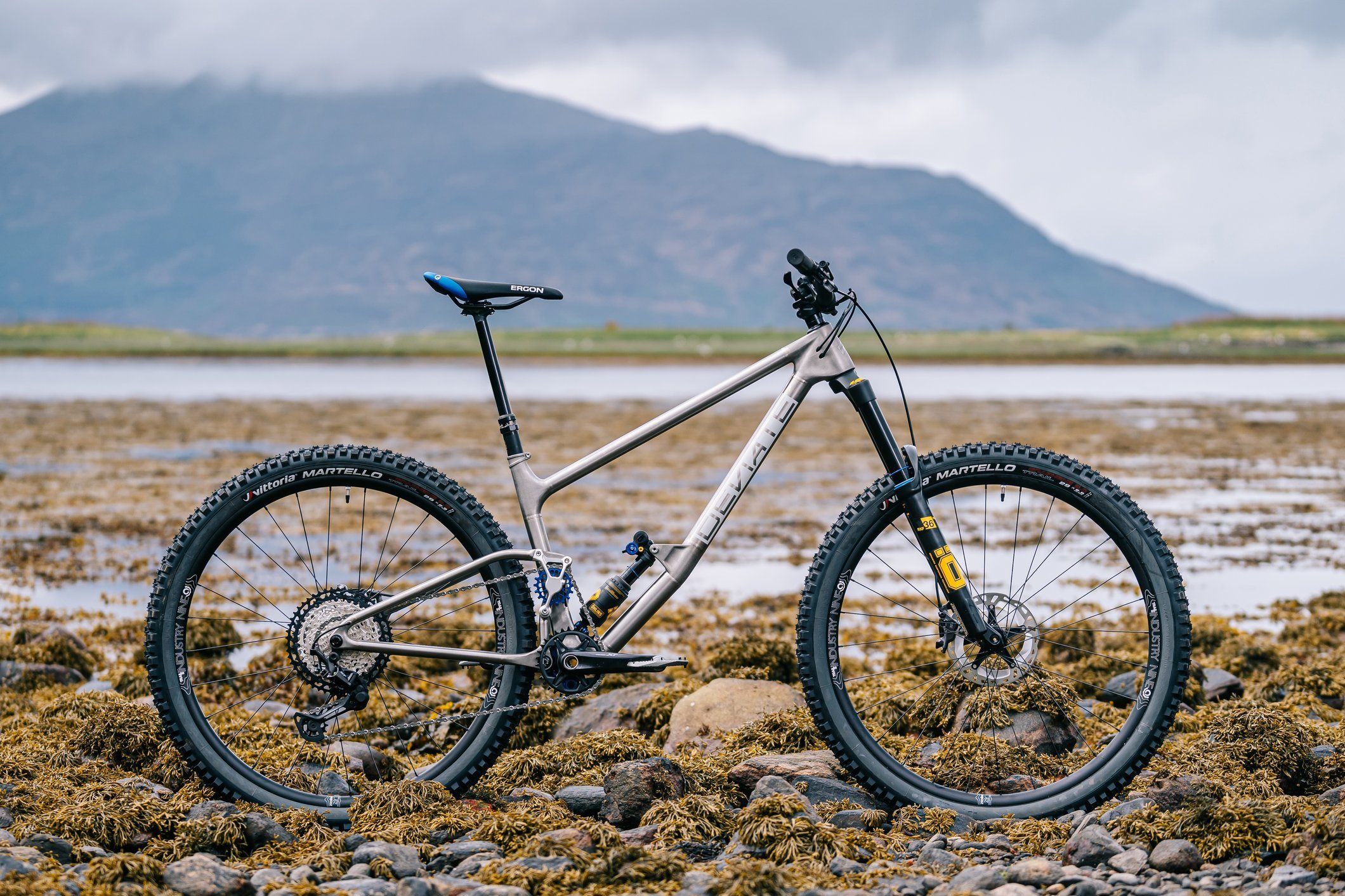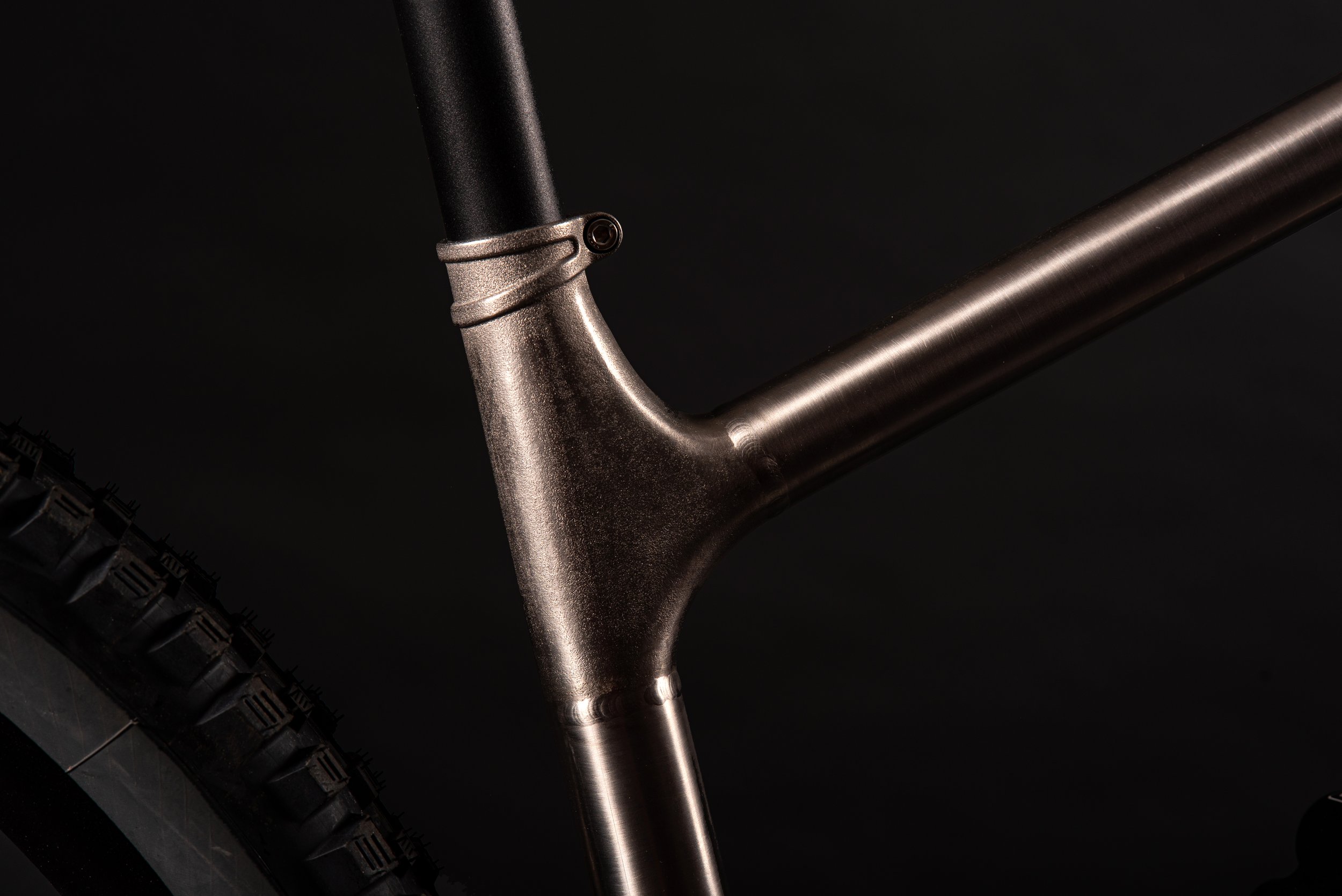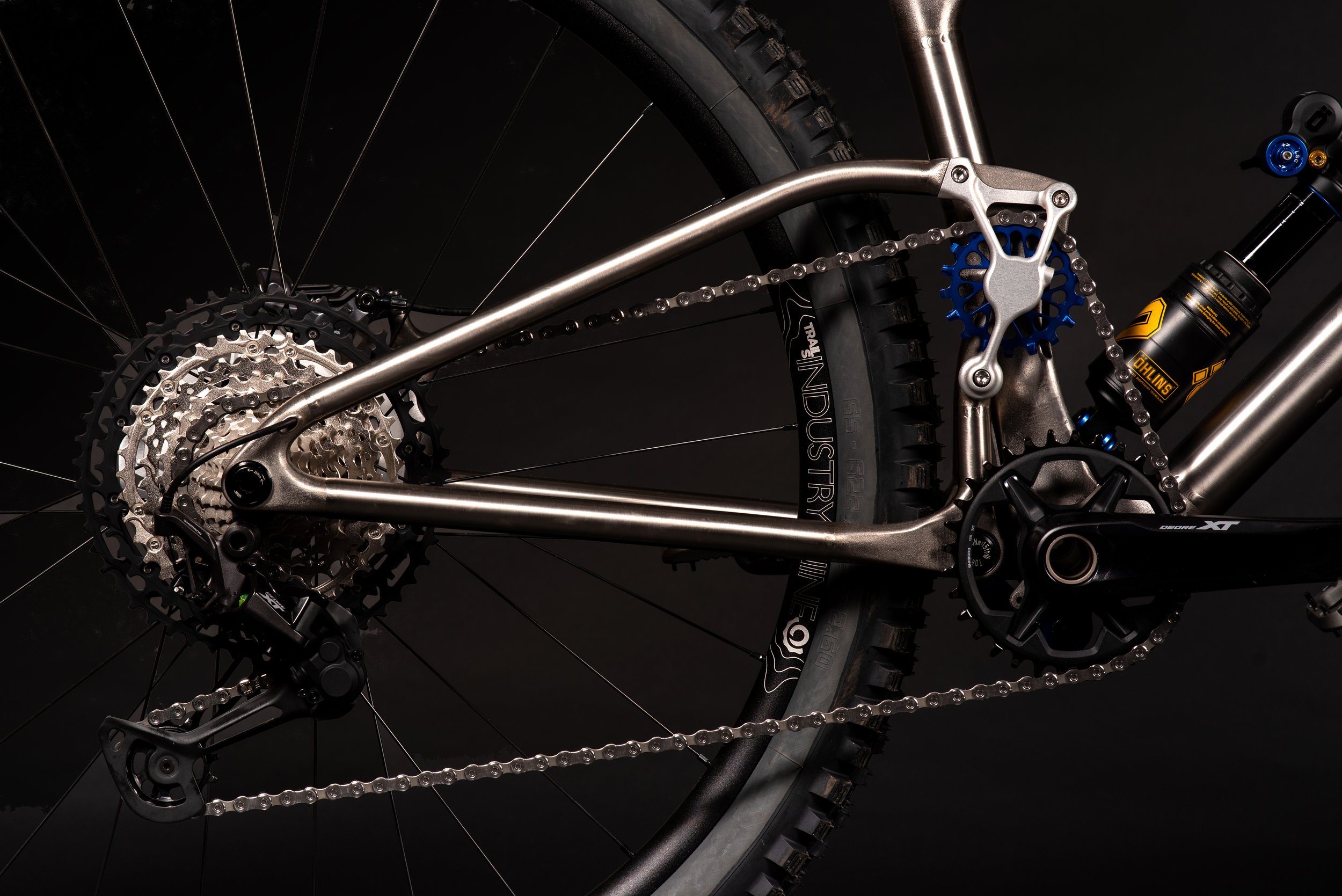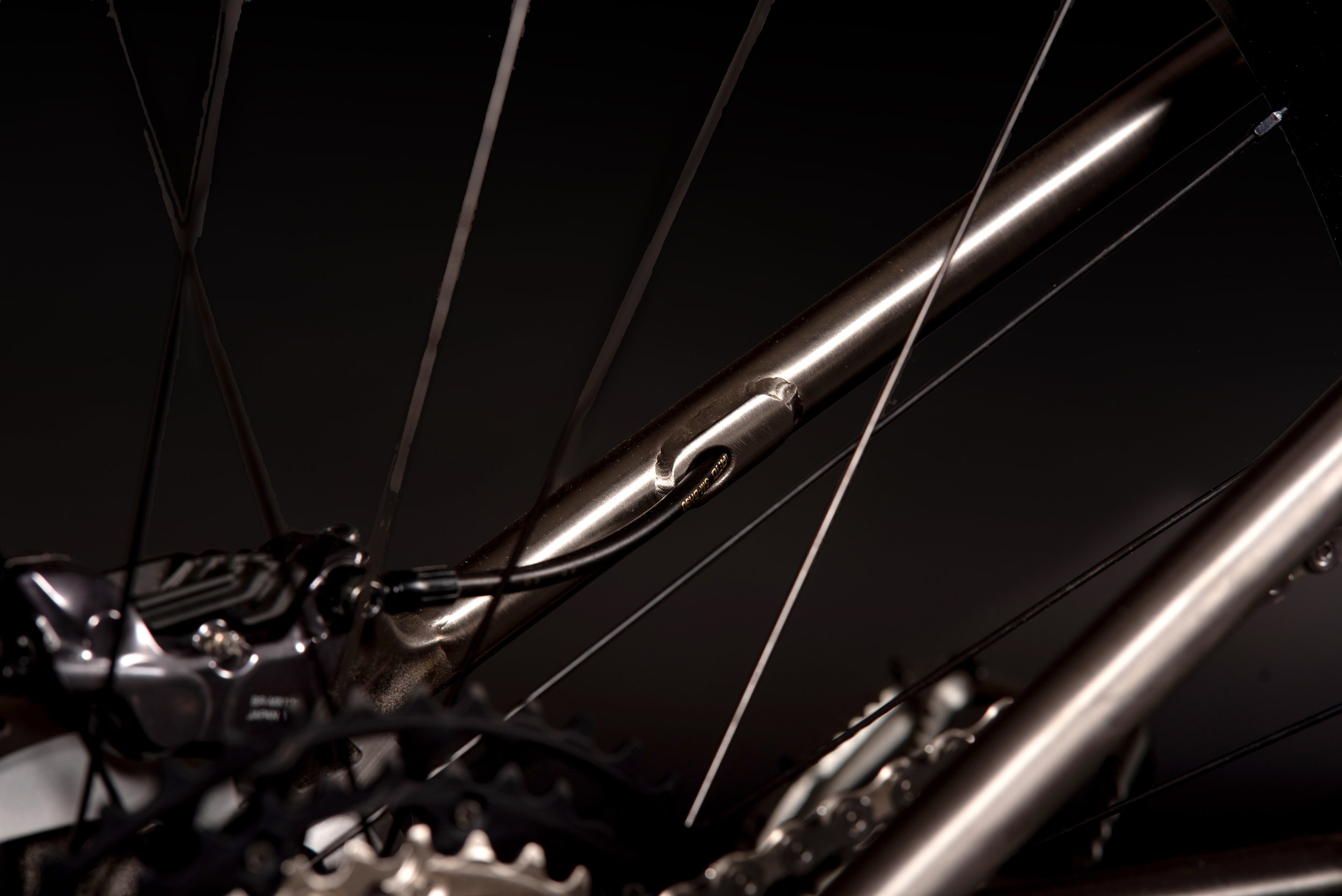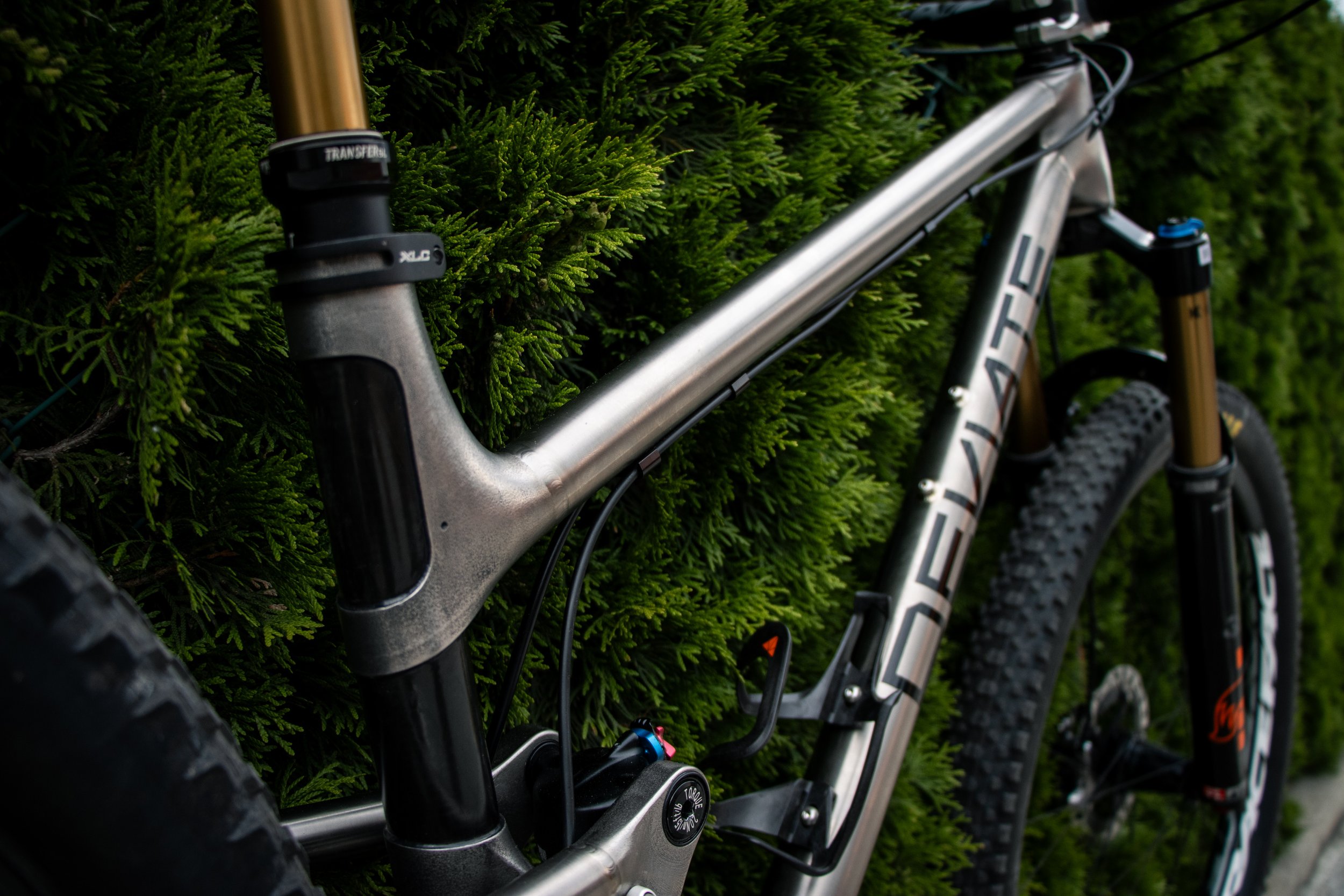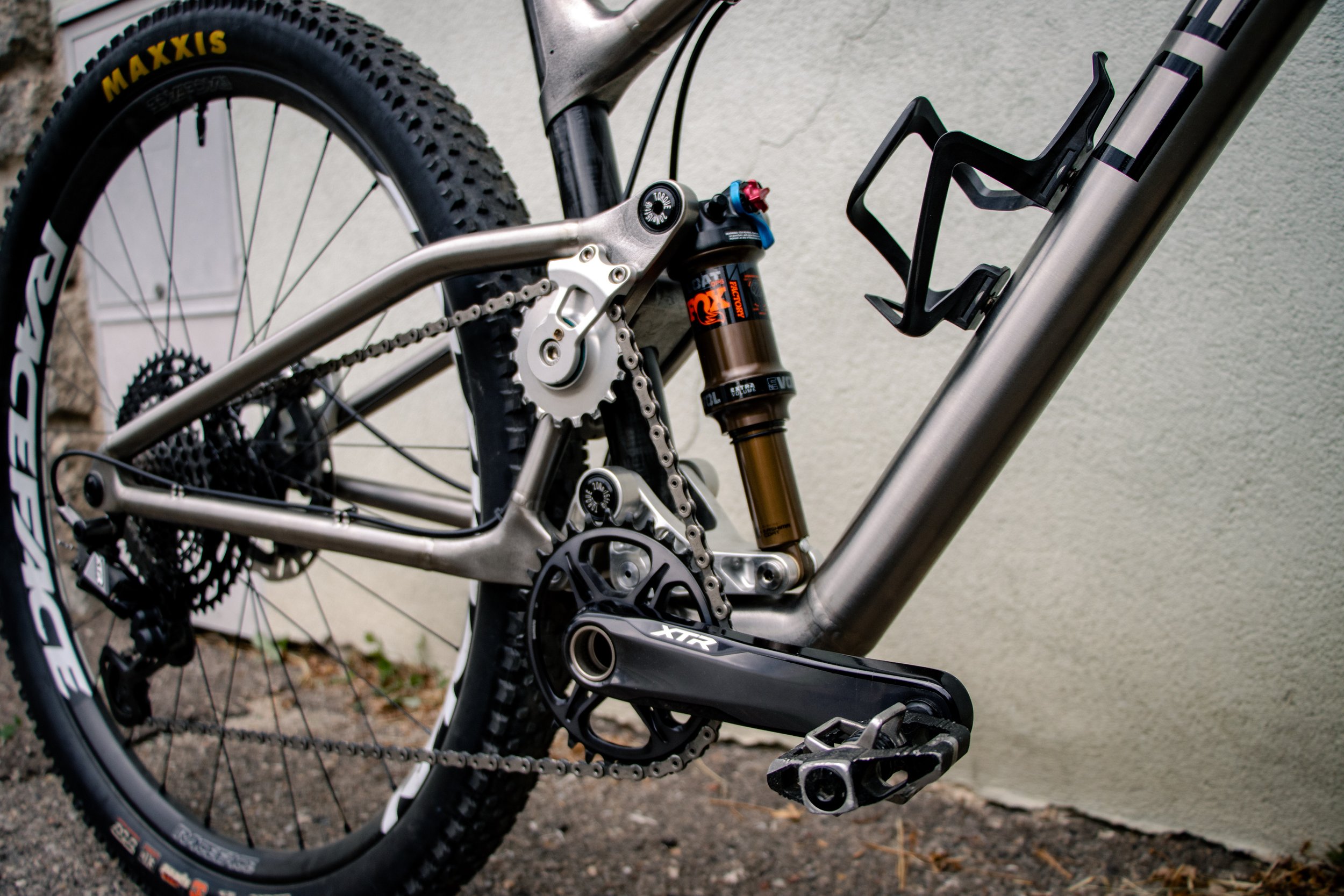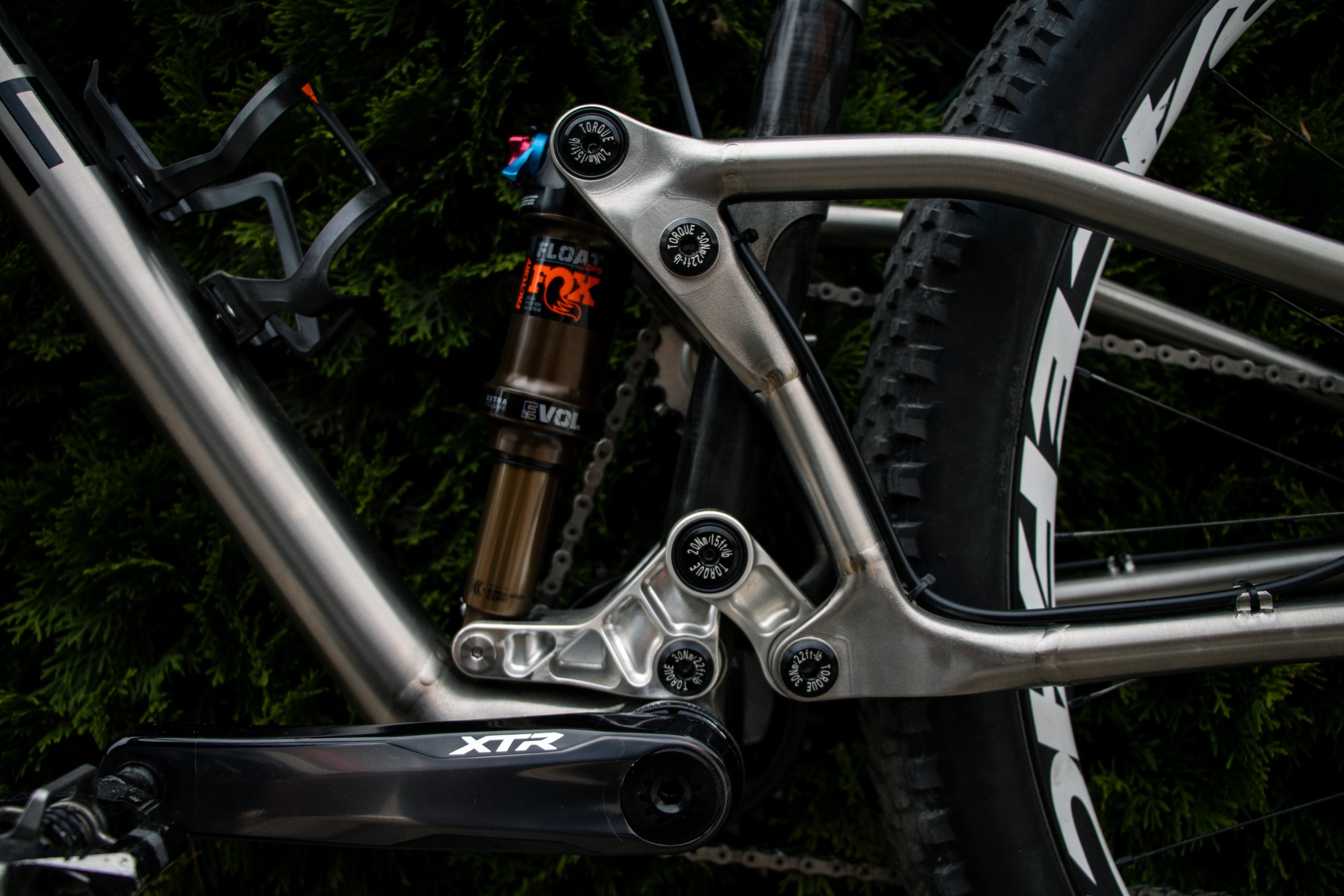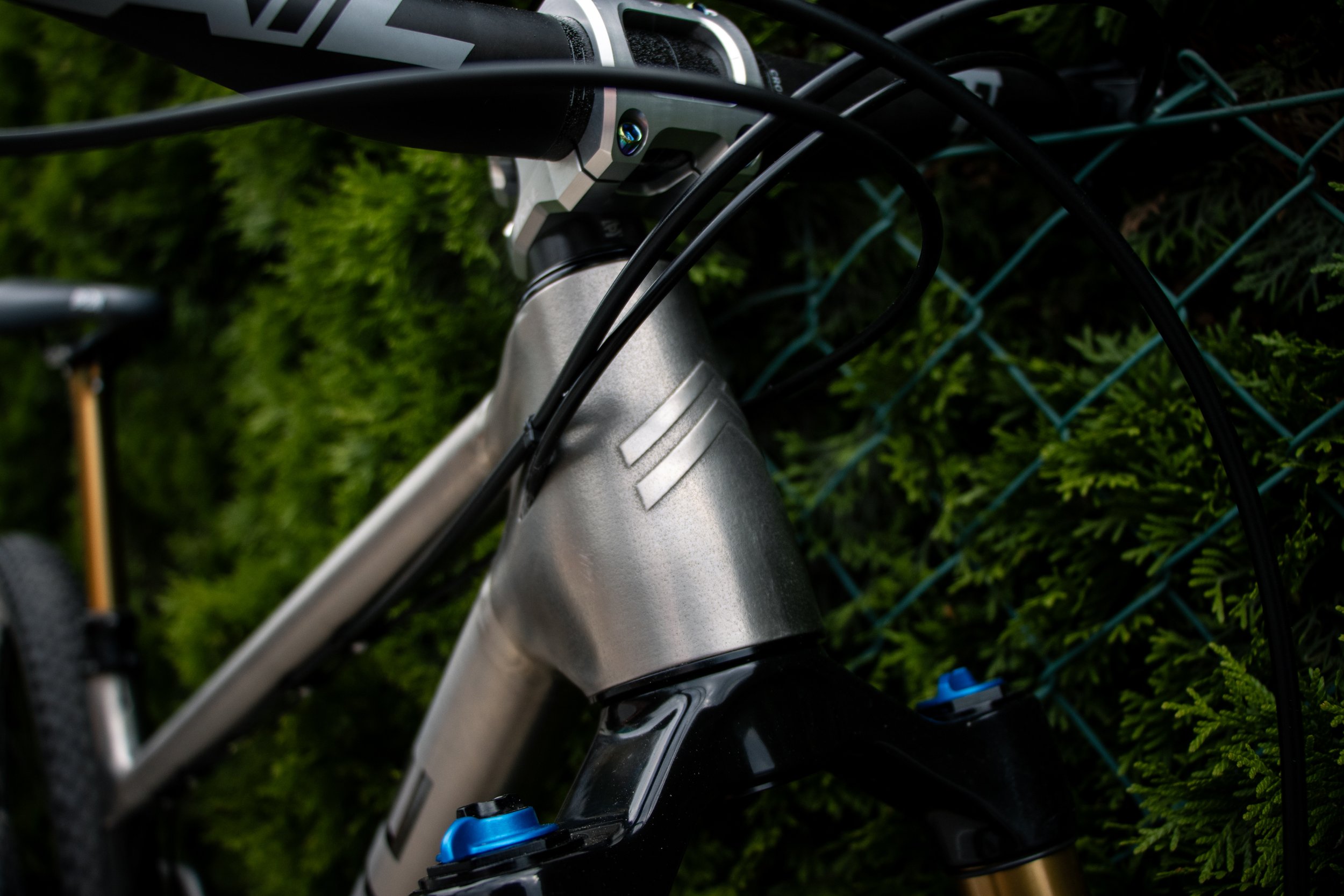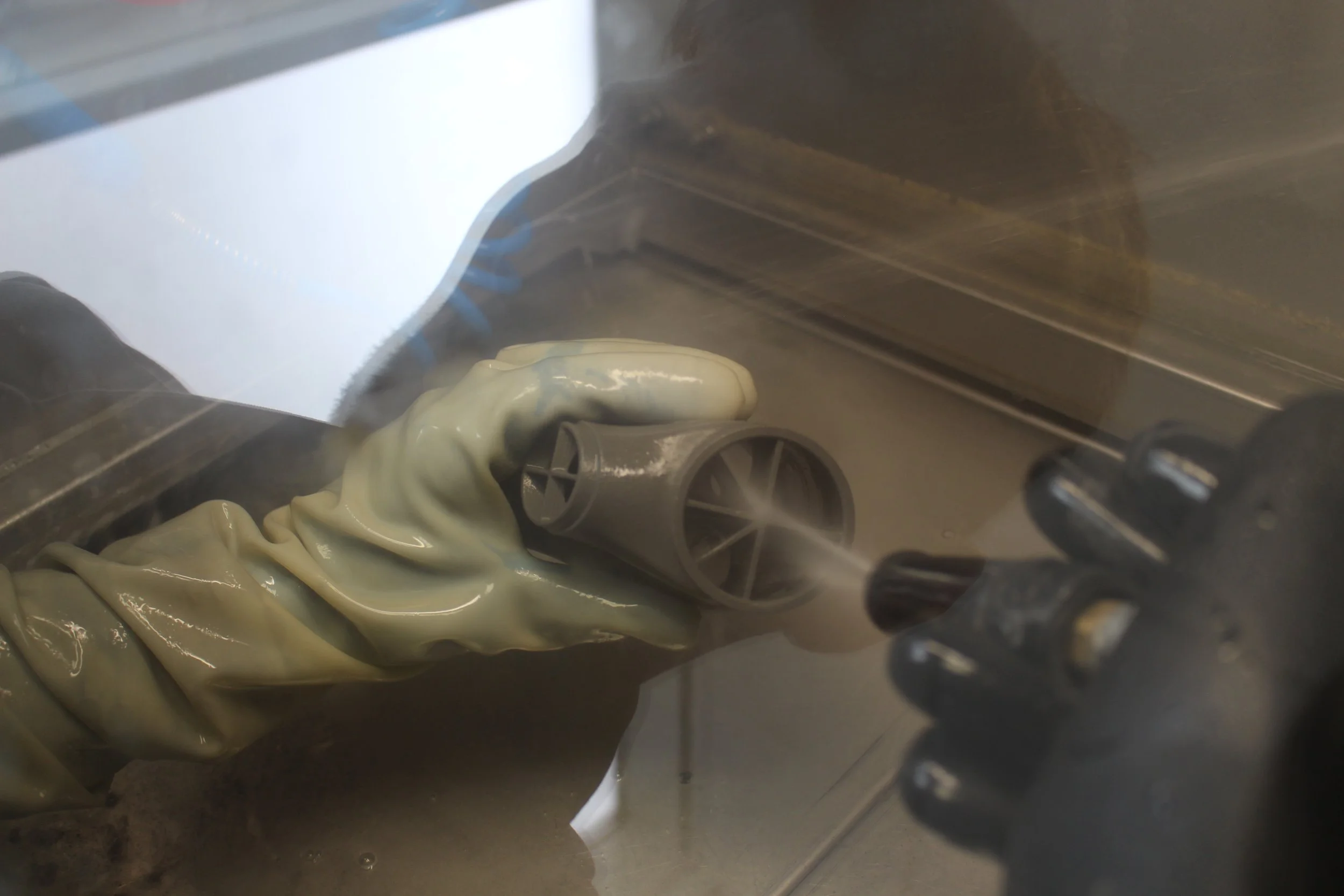The Future of Frames? Titanium High Pivot Prototypes
At Eurobike 2023, Deviate unveiled a new high pivot prototype - the Lowlander. Made with 3D printed titanium lugs and thermoplastic tubing, this is the start of a lengthy project that aims to bring Deviate’s manufacturing over to the UK whilst providing a sustainable, flexible and customisable approach to frame production. But the Lowlander isn’t alone in Deviate’s titanium line-up. It’s joined by it’s 145mm travel counterpart – the Tilander.
Here we explore the development of these two prototypes and what this means for the future of Deviate.
Ti’s the Limit
Titanium is, no question, a wonder material but as composite technology evolved, manufacturers were able to develop more complicated shapes at a fraction of the price.
As we have moved further into the 21st century, the relentless march of progress has once again thrown Ti a lifeline, in the form of 3D printing. Suddenly, spectacularly complex and hitherto impossible structures crafted out of titanium are possible, and riders are once again looking at Ti as the once and future king of bike materials.
Given Deviate’s proven mastery of carbon bike frames, it had to be more than just curiosity that led Deviate co-founder and lead engineer Chris Deverson into the world of Ti, as he explains:
“We were actually assessing the feasibility of producing frames entirely in the UK,” Chris said. “We decided to explore all possible options, both here and in Europe – we’re looking to develop processes that are more sustainable, more competitive, and that still elevates the rider’s experience. After reviewing all the viable technology, we ended up with a 3D printed, Ti lugged concept, but the cost was prohibitive! So when we found out about CMF (cold metal fusion) and other similar processes like metal injection moulding we recognised the potential, and quickly started working with (Kiel, Germany-based company) Element22. Their technical capabilities were really what made all of this possible.”
So the components are designed by Chris, here in the UK, and 3D printed by Element22 in Kiel, in Germany. Then, they’re shipped back to the UK, to be expertly fabricated into frames by James Egercz from Craft Bikes. “Jim’s attention to detail and thorough work practice is second to none”, said Chris. “It’s almost been a collaborative project, where he has put considerable thought and time into making it a success - mainly because he wants a Ti full suspension bike for himself!”
From Tilander to Lowlander
Prototyping started with the Tilander, a 145mm bike which uses very similar geometry to – and the same hardware as – Deviate’s Highlander.
“When it came to making the Tilander, the idea was essentially to replicate the Highlander, using the same hardware, but slightly tweaking the geometry. Even with the advantages of the sintering process, the complexity of the structures we needed to print were staggering – with a resultant huge increase in cost. We had lugs with more complicated CAD model features than a complete carbon front triangle! It took 12 months of different design iterations to print properly, and it really wasn’t cost effective.”
Taking these learnings, Chris decided to work on a second design – the Lowlander - a downcountry bike with 125mm travel. “We had pre-existing ideas for a shorter travel bike,” Chris said. “So I took the opportunity to develop a new platform, with the same high pivot functionality, but shorter travel, for a poppier ride – and it has the advantage of more space inside the front triangle for water bottles or luggage.”
The Benefits Of Ti
The CMF process that Element22 and Headmade Materials have pioneered essentially uses a powdered metal – each particle of which is coated with a special plastic polymer. The 3D printing process melts the plastics together, and then the sintering process removes the plastic coating and anneals the metal, to yield a product that’s around 97% as dense as a machined block of Titanium, for substantially less cost. Most of the cost and CO2 made during titanium part production comes from refining the ore, or purifying the metal itself. The more complex the part, the more cost effective 3D printing becomes as you no longer need to machine 95% of the material away; you just print the 5% required. This ‘cold SLS’ process, has a number of significant advantages.
Finish
“The surface finish is smoother, so we don’t need to spend as much time finishing. We can print those parts floating in a powder bed with no support. We only need minor supports to hold everything together during the sintering – before we sinter it, the 3d printed part has roughly the texture of chocolate” - Johannes Schaper, Element22 Operations Manager
Speed
Speed and flexibility of production is also a big advantage. “If all goes well, I can have parts in front of me one or two weeks after submitting the designs, depending on how long customs hold them up! There are some risker parts that may take a few iterations to become stable, but once dialled normal production takes a few days.”- says Chris. Johannes added, “The printing itself is an overnight job. There are a couple more days needed for the sintering process, but the turnaround is extremely quick.”
Cheaper and environmentally friendly
Fewer supports means less waste. “When it comes to material, we only use what’s needed. In aerospace they call it the “buy to fly” ratio - we have a buy to fly ratio of nearly one, which is as good as it gets. We’ll have a tiny amount of loss in loose powder but if something goes wrong, we can actually reuse that loose powder that we take off, and we can also reuse broken parts before they’re sintered.
Customisation
“For sure, custom geometry is possible,” said Chris. “But it has to be managed properly. We’d need to consider how to track individual parts through production, for example - we could produce half-way sizes quite easily but we’d need to avoid alienating 2nd hand customers by having geometry which is too bespoke for one customer.”
When it comes to comparing the material performance of carbon fibre and titanium, the loading direction is a key consideration. Loading a composite in compression is not optimal and requires additional material to resist buckling. However, titanium offers its strength in all directions (with some buckling design considerations). So it's not easy to compare apples with apples, as it very much depends on the design and loading. In short, Titanium has one of the highest strength-to-weight ratios for metallic/printable materials out there. Utilising Titanium at the connections allows us to design a weight-efficient structure.
”In theory, strength between the materials isn’t too dissimilar in terms of magnitude,” says Chris. “There are advantages to having the isotropic (same structural performance in all directions) properties of titanium. The tubes offer improved durability too, but the welding needs to be absolutely perfect to maintain the performance – which is why we have complete faith in Jim Egercz from Craft Bike’s work. [Jim welds Ti tubes and the printed Titanium components into the completed frames – Ed]. The final weight of the Ti frames comes out at much the same as our current carbon frames, so we’re pretty happy. There is a fair amount of optimising to do yet, as we were more focused on the success of the prints, so there are likely more savings to be made there.” - Chris Deverson
But of course, the most important question is how the frames ride – over to Chris:
“Well, it’s beautiful to ride a titanium bike, of course and the Ti-lander acceleration response is totally unlike the carbon frame! There’s a certain spring to your inputs that’s difficult to describe. But it’s certainly a good feeling…”
The Future is Ti?
“While this was purely a research and development exercise, we’re certainly exploring this as an option for the future. To have the flexibility and ability to build locally is very exciting. Also being able to consider how the end-of-life loop can be closed – given titanium is more durable, it should have a longer life too.”
That’s not to say that the Low-lander is a dead-cert for appearing for sale in any form any time soon, either in Ti or in carbon – but let’s say that possibilities are being considered…

